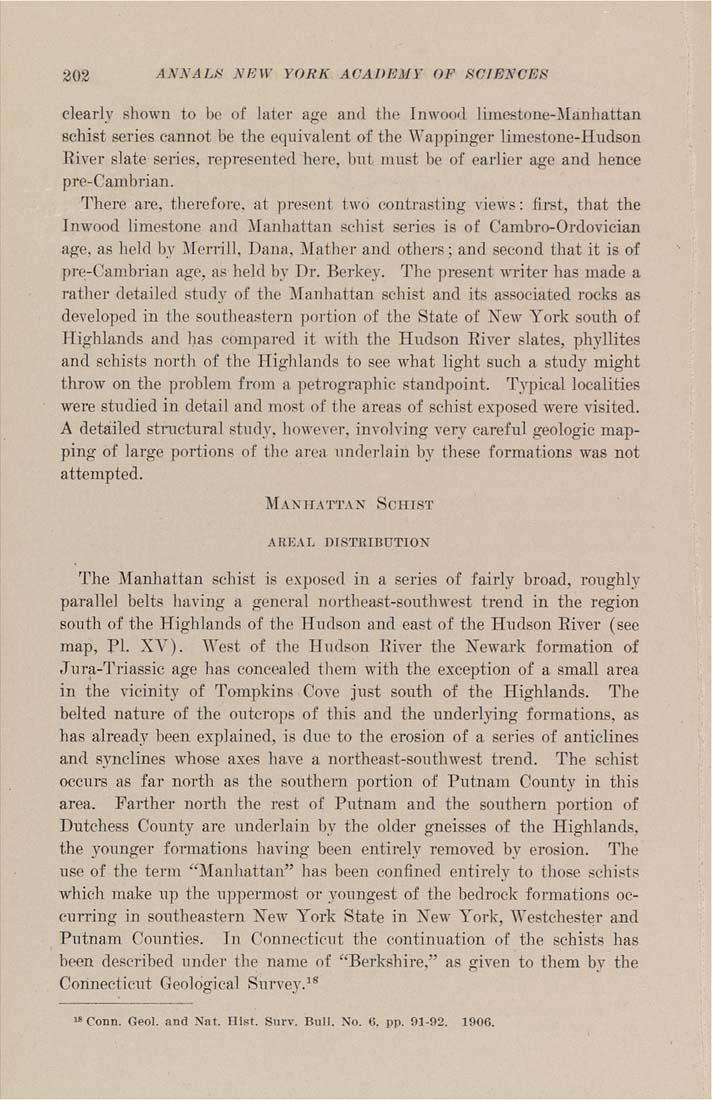302 ANNALS Nl'iW YORK ACAltEMY OF SCIENCES
clearly shown to be of later age and the Inwood limestone-Manhattan
schist series cannot be the equivalent of the Wappinger limestone-Hudson
River slate series, represented here, but must be of earlier age and hence
pre-Cambrian.
There are, therefore, at present two conti-asting views: first, that the
inwood limestone and Manhattan schist series is of Cambro-Ordovician
age, as held by Merrill, Dana, Mather and others; and second that it is of
pre-Cambrian age, as held by Dr. Berkey. The present writer has made a
rather detailed study of the Manhattan schist and its associated rooks as
developed in the southeastern portion of the State of New York south of
Highlands and has compared it with the Hudson River slates, phyllites
and schists north of the Highlands to see what light such a study might
throw on the problem from a petrographic standpoint. Typical localities
were studied in detail and most of the areas of schist exposed were visited.
A detailed structural study, however, involving very careful geologic map¬
ping of large portions of the area underlain by these formations was not
attempted.
M.vxM.A iT.AX Schist
AIii:.\L niSTRIBUTION
The Manhattan schist is exposed in a series of fairly broad, roughly
parallel belts having a general northeast-southwest trend in the region
south of the Highlands of the Hudson and east of the Hudson River (see
map, Pl. XV). West of the Hudson River the Newark formation of
Jura-Triassic age has concealed them with the exception of a small area
in the vicinity of Tompkins Cove just south of the Highlands. The
belted nature of the outcrops of this and the underlying formations, as
has already been explained, is due to the erosion of a series of anticlines
and synclines whose axes have a northeast-southwest trend. The schist
occurs as far north as the southern portion of Putnam County in this
area. Farther north the rest of Putnam and the southeni portion of
Dutchess County are underlain by the older gneisses of the Highlands,
the yoTinger formations having been entirely removed by erosion. The
use of the term "Manhattan" has been confined entirely to those schists
which make up the uppermost or youngest of the bedrock formations oc¬
curring in southeastern New York State in New York, Westchester and
Putnam Counties. In Connecticut the continuation of the schists has
been described under the name of "Berkshire," as given to them by the
Connecticut Geological S\ir\'ey.^*'
"Conn. Geol. and Nat. Hist. Suiv. Bull. No. «. pp. 91-92. 1906.
|








